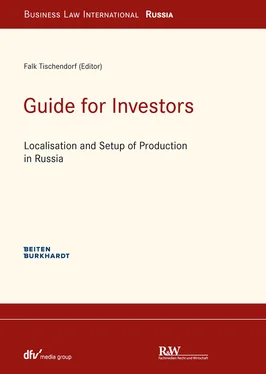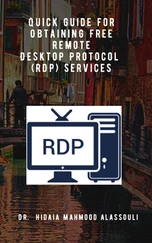It is also interesting to consider performance that has not been reduced by current EBITDA or EBITDA, but instead income net of capital expenditure, with due account of the invested capital, in other words the performance of Russian production facilities based on economic value added. Here you can see even more clearly whether the investments, in other words, the setup of production facilities in Russia, are actually worth it.
In each country managers exchange opinions regarding the market, their business and problems, when they live so to speak in a diaspora as in Russia. And for this purpose, you have not only such institutions as foreign chambers of commerce or trade missions or European Business Associations, but also independent platforms unrelated to the external (economic) policy of the country of origin. The leaders of multinationals doing business in Russia can be encountered in Moscow on a regular basis in the biggest network of such “business groups”, which naturally must not be named for the purposes of retaining anonymity not only for the purpose of exchanging opinions, but also in order to learn anonymously, on the basis of their own experience and therefore with a certain degree of reliability, how colleagues from the same industry assess the development of the market and its results. Knowledge of the market and the opportunity to benchmark a company’s performance in Russia against that of the other subsidiaries of the other concerns, are therefore at times more extensive than business people in Germany often think. Therefore it is currently held that it is quite possible in Russia to engage in production and demonstrate results that turn out to be justifiable compared to the other participants of the group.
11. In conclusion it is worth noting that you have all the prerequisites for successful production. For this purpose, a real estimate of the facts and legal framework, careful financing and technical planning, and also a great deal of patience are required.
Anyone, who has any doubts on this matter, should simply talk to people who already have experience of working in Russia.
You have also to ask what is of interest to investors in Russia’s current economic policy. It is worth highlighting first and foremost the attempt to localize production capacities in Russia and within this framework proposing the creation of added value in the country, and accordingly attracting technologies to the country. However, this approach is not unique and characteristic only of Russia. If we look at the example of American economic policy, then compared to American import duties on goods, which are set in prohibitive amounts and to an unimaginable extent, it would be virtually impossible to characterize Russian tax concessions for the setup of the production facility as actual pressure. Especially if concessions are granted only to parties that conclude transactions with the Russian state as a client.
For the first time in the English language this publication covers the relevant legislative provisions extensively, including industry rules that are applied when setting up production facilities so that the investor is able to avail itself of the benefits of localizing products in Russia. The materials contained therein extend far beyond only the topic of localisation – they highlight the economic and political conditions under which it is possible to work in Russia.
In recent years Russia has been paying special attention to the policy of import substitution and development of domestic industry, which is aimed, primarily, at the siting of the production facilities of international companies in Russia. The goal of this process is to reduce Russia’s dependence on imports and to establish the manufacture of high-tech products inside the country. With this goal in mind, the Government of the Russian Federation has recently adopted a number of resolutions concerning localisation, aimed at improving the position of manufacturers of Russian goods (“Made in Russia”). However, the norms regulating localisation issues are not generic, but rather are unique for each specific industry. They take into account whether products are being supplied to the state or to partially state-owned companies or are being sold through B2B arrangements. In addition to the norms regulating localisation issues, the state is also developing measures of support to be provided to production companies in order to encourage them to locate or expand their production facilities in Russia.
In practice, these recent developments also affect international enterprises striving to localise their production in Russia in order to remain competitive or to improve their position on the Russian market.
This guide gives investors an overview of current legal regulation concerning localisation of production and support measures for manufacturers. Among other things, the guide will answer questions concerning the criteria for receiving “Made in Russia” status and reveal the role that will be allotted to special investment contracts in this regard. From this guide you will also learn about selecting a site for production facilities in Russia, the tax regulations in place in some regions, and the underlying specifics of building production facilities. Furthermore, this guide presents key localisation strategies and in particular opportunities for cooperation with Russian partners.
A. LOCALISATION OF PRODUCTION: SECTORAL OVERVIEW
Конец ознакомительного фрагмента.
Текст предоставлен ООО «ЛитРес».
Прочитайте эту книгу целиком, купив полную легальную версию на ЛитРес.
Безопасно оплатить книгу можно банковской картой Visa, MasterCard, Maestro, со счета мобильного телефона, с платежного терминала, в салоне МТС или Связной, через PayPal, WebMoney, Яндекс.Деньги, QIWI Кошелек, бонусными картами или другим удобным Вам способом.












